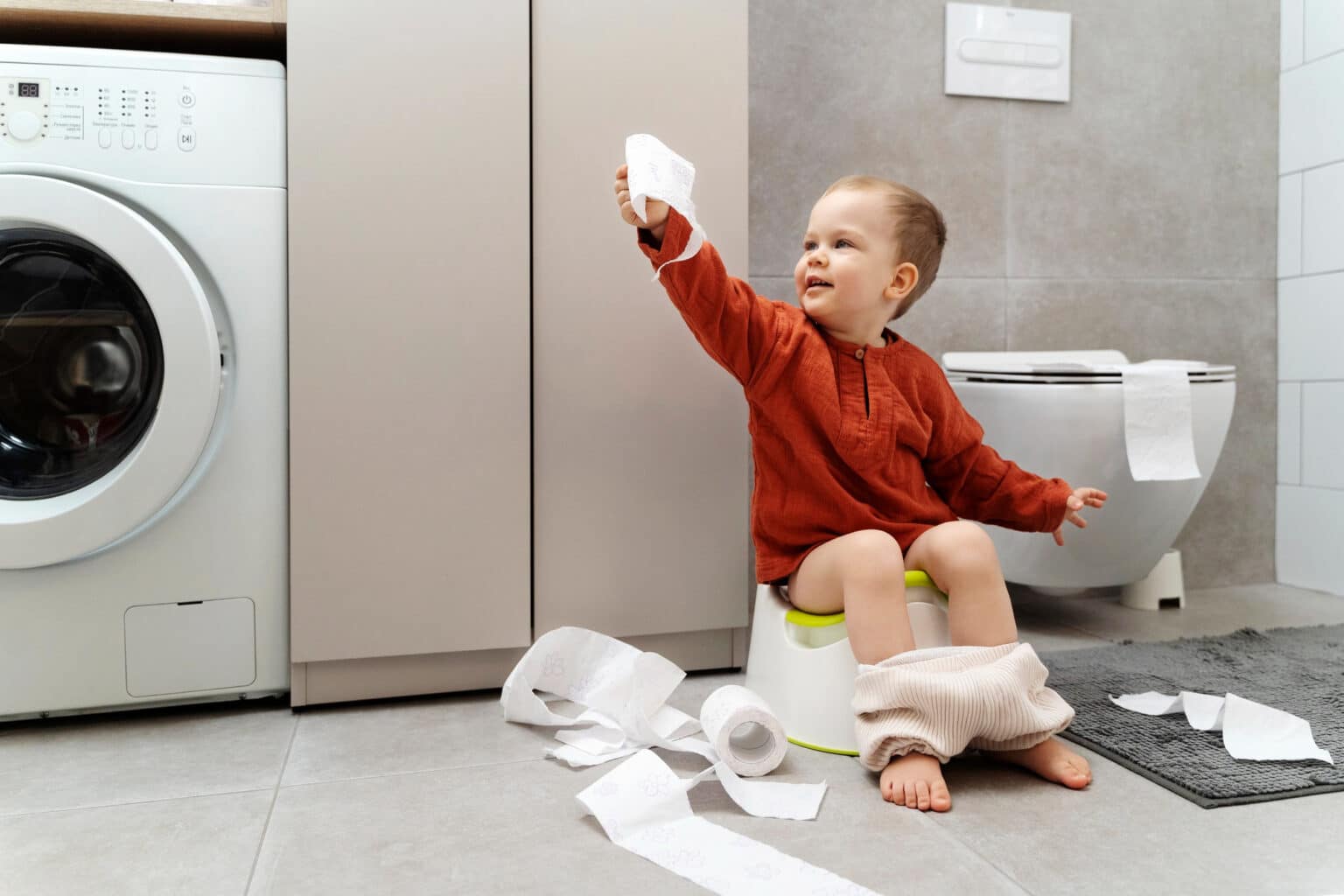Potty training can be a challenging but rewarding experience for both parents and children. It's a significant milestone that marks a transition towards independence and self-sufficiency. While the journey may have its ups and downs, with the right approach and a positive attitude, it can be a smooth and enjoyable experience. This article provides a comprehensive guide to diaper removal, covering various aspects of the process, from understanding the signs of readiness to celebrating successes and overcoming challenges.
When to Start Diaper Removal
Knowing when to start potty training can be tricky, as it varies for every child. Most children in the US learn to use the potty between 2 and 3 years old. The average age for starting to potty train is between 18 months and 2.5 years. It often takes between 3 and 6 months for a child to be potty trained, and even longer to stay dry at night. However, age isn't the sole determining factor. Instead, parents should look for signs of readiness in their child and be patient, as every child develops at their own pace. Experts recommend starting to talk about potty training around a child's first birthday to pique their interest in the process. You can introduce basic bathroom words, such as “pee,” “poop,” and “potty,” and explain that everyone uses the potty.
Signs of Readiness
The following table summarizes the signs that indicate your child might be ready to start potty training:
| Physical Readiness | Cognitive Readiness | Emotional Readiness |
|---|---|---|
| Can control bladder and bowel muscles | Can follow simple instructions | Shows an interest in using the potty or wearing underpants |
| Stays dry for at least two hours during the day | Understands and uses words about using the potty | Expresses a desire to use the bathroom |
| Is dry after naps | Makes the connection between the urge to pee or poop and using the potty | May try to take off their diaper when it's wet or soiled |
| Can walk to the toilet and sit on the potty chair | Hides when filling their diaper |
Different Methods of Diaper Removal
There is no single “best” method for potty training, as the ideal approach depends on your child's temperament and your preferences as a parent. Some popular methods include:
3-Day Potty Training
This method involves ditching diapers completely and spending a few days at home with a toddler who is naked or wearing only a shirt, helping them associate the toilet with peeing and pooping. Proponents of this method suggest that removing the diaper can make potty training easier for the child by increasing their body awareness and making the sensation of needing to go more noticeable. This method can be quick and effective, but requires a high level of commitment from parents and can be messy. To implement the 3-day method, start by prepping your child two weeks in advance by talking about the change and introducing potty training vocabulary. Then, ditch the diapers and encourage your child to be bottomless or wear loose-fitting clothing. Give your child extra fluids to increase their need to use the potty. Watch for signs that your child needs to go, such as a pause in play, a panicked expression, or grunting. Finally, make a potty routine by directing your child to the bathroom first thing in the morning, before and after naps, after meals, and before bedtime.
Brazelton Method
This child-oriented approach involves following a series of steps based on the child's readiness signs. The steps include introducing the potty, having the child sit on it clothed, then naked, and finally, having them use it after soiling their diaper. This method is less intense than the 3-day method, but may take longer.
Montessori Method
This method focuses on supporting the child's natural development and independence. It involves preparing the environment by providing child-sized potties, step stools, and easy-to-remove clothing. It also emphasizes incorporating toileting into the child's routine and encouraging self-sufficiency by allowing them to clean up accidents and change their own clothes. The Montessori method respects the child's autonomy and encourages them to take ownership of the potty training process.
Elimination Communication
This method involves observing the baby's signals and holding them over a toilet or other receptacle to eliminate waste from birth. This method can promote a stronger parent-child bond and may lead to earlier toilet training, but requires a significant time commitment and may not be feasible for all families. To practice elimination communication, pay attention to your baby's signals, such as timing, patterns, and vocalizations. You can also use your intuition to sense when your baby needs to go.
Baby-Led Potty Training
This approach involves offering the baby the opportunity to pass waste outside of their diaper from a young age. This can reduce diaper rash and promote a stronger bond, but requires patience and observation. To start baby-led potty training, change the way you think about diapers and recognize that babies are born with an instinct to not soil themselves. Observe your baby's signals and offer them opportunities to use the potty at likely times, such as after waking up or after meals. You can hold your baby over a bowl, sink, or potty, or have them sit on a potty with support.
Tips and Tricks for Easier Diaper Removal
For Parents: Preparing and Preventing
- Prepare the environment: Create a comfortable and accessible potty area. Place the potty in a convenient spot, such as the bathroom or the child's playroom. Ensure the bathroom is child-friendly with a step stool for easy access to the toilet and sink.
- Use training pants or pull-ups: During the transition phase, consider using training pants or pull-ups to help your child get used to the feeling of wearing underwear while providing some protection against accidents.
- Be prepared for messes: Have all the necessary supplies within reach before starting a diaper change, including wipes, a new diaper, and a change of clothes.
- Ensure a safe changing area: Make sure your changing table pad is concave in the center and use safety straps to prevent falls.
- Prevent diaper rash: Keep your baby's bottom clean and dry. Apply diaper cream or petroleum jelly if needed.
For Parents: Encouraging and Engaging
- Establish a routine: Implement a simple schedule for potty breaks, such as encouraging your child to go after meals or naptime. This helps create predictability and consistency.
- Use positive reinforcement: Praise and encourage your child when they do a good job on the potty. Use a potty training sticker chart to track and reward progress.
- Make it fun: Create a potty-training song, add blue dye to the toilet bowl to watch the color change, or use other creative methods to make the experience more engaging.
- Consider the “cool wipe” trick: Gently wipe the baby's belly with a cool wipe before unfastening the diaper. This may trigger them to empty their bladder before the diaper comes off, preventing an unexpected spray.
- Try different diaper changing positions: If your baby is constantly moving during changes, try changing them while they're standing or on the floor.
For Children: Promoting Independence
- Introduce the potty early: Familiarize your child with the potty before you start potty training by placing it in the bathroom or their room.
- Involve them in the process: Let your child help pick out their potty, making it feel like choosing a new toy.
- Practice dressing skills: Encourage your child to practice pulling their pants up and down to promote independence and confidence.
- Provide “naked time”: Give your child some time each day to be naked and explore their bodies. This can help them become more aware of their bodily functions and practice dressing skills.
For Children: Addressing Fears
- Address fears: If your child is scared of the potty, address their fears with patience and understanding. Make the potty familiar, use positive reinforcement, and consider using books or stories to help them overcome their anxiety.
Dealing with Potty Training Accidents
Accidents are inevitable during potty training. When they happen, stay calm and reassuring, and avoid scolding or punishing your child. Instead, gently acknowledge the accident and remind them that pee and poop only belong in the potty. You can involve your child in cleaning up the accident, not as a punishment, but as a way for them to learn how to take care of themselves. If your child is having frequent accidents, consider setting a bathroom schedule and encouraging them to use the toilet every two hours, even if they say they don't have to go. You can also teach them to relax and take their time when going to the bathroom to ensure they empty their bladder completely.
Common Challenges and Setbacks
Potty training isn't always smooth sailing. Some common challenges include:
- Fear of the potty: Some children may be scared of the potty or the toilet. Address their fears with patience and understanding, and consider using books or stories to help them overcome their anxiety. To make the potty less scary, introduce it early on and let your child explore it without pressure. You can also personalize the potty by letting your child decorate it or choose their own.
- Resistance: Some children may resist potty training altogether. Try to understand the reason behind their resistance and address it with empathy and encouragement.
- Regression: Even after successful potty training, children may regress due to various factors, such as a new sibling or a change in routine. Identify the cause of the regression and address it with patience and support.
- Nighttime wetting: It usually takes longer for children to stay dry at night. Use waterproof mattress protectors and be patient, as most children eventually outgrow bedwetting.
- Fecal contamination: Diaper changes can pose a risk of fecal contamination, which can lead to the spread of germs and infections. To minimize this risk, always wash your hands thoroughly before and after changing a diaper, and clean and disinfect the changing area regularly.
Maintaining a Positive and Supportive Environment
Creating a positive and supportive environment is crucial for successful diaper removal. Here are some tips:
- Be patient and understanding: Potty training takes time and effort. Avoid rushing the process or putting pressure on your child.
- Offer encouragement: Praise and reward your child for their efforts, even if they don't always succeed.
- Make it fun: Use games, songs, and stories to make potty training more enjoyable. You can also make diaper changes more engaging by using mobiles, songs, or games to distract and entertain your child.
- Respect your child's autonomy: Give your child choices and involve them in the process.
- Stay calm and positive: Avoid scolding or shaming your child for accidents. Maintain a calm and soothing voice during diaper changes to create a positive experience for your child.
- Focus on connection: Use diaper changes as an opportunity to bond with your child.
Celebrating Successes and Milestones
Celebrating successes and milestones is a great way to keep your child motivated and proud of their progress. Here are some ideas:
- Reward chart: Use a sticker chart or other visual aids to track progress and reward achievements.
- Potty party: Throw a small celebration to mark significant milestones, such as staying dry for a week or transitioning to underwear.
- Certificate of achievement: Create a personalized certificate to commemorate your child's potty training journey.
- Special outing: Plan a fun outing to celebrate a big potty training milestone.
- Treasure box: Fill a box with small toys or treats that your child can choose from after each successful potty visit.
- Big kid underwear: Let your child choose their own special underwear to celebrate the transition from diapers.
- Potty training app: Consider using a potty training app to track progress, set reminders, and celebrate milestones in a fun and engaging way.
Conclusion
Diaper removal is a significant step in a child's development, and it's important to remember that potty training is not a race or a test. Every child learns at their own pace, and there is no need to compare your child to others. By understanding the signs of readiness, using effective strategies, maintaining a positive and supportive environment, and celebrating achievements, parents can help their child navigate this transition with confidence and success. Enjoy this special milestone with your child, and remember that patience and consistency are key.











